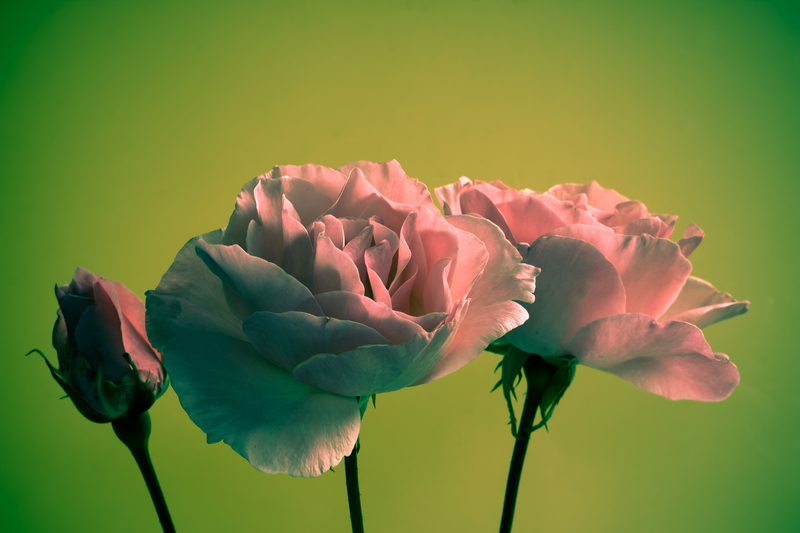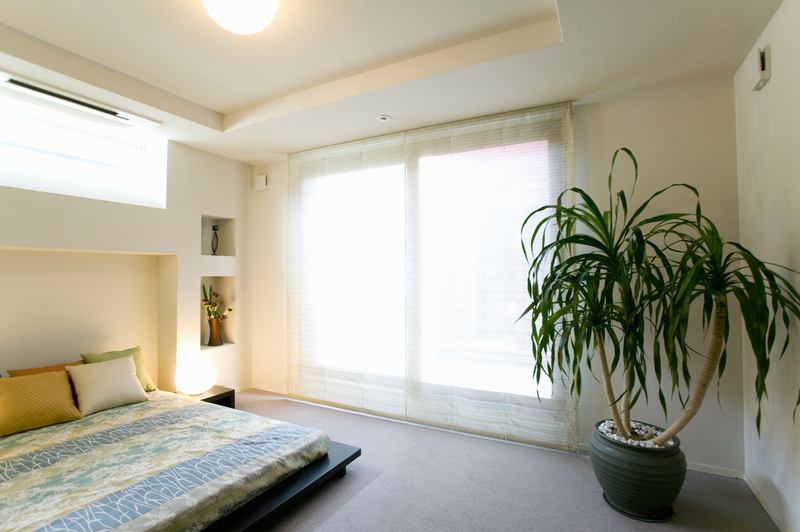Tips for Mixing Flowers and Greenery in Window Boxes
Window boxes bring a splash of natural beauty to your home, framing your views with bursts of color and fresh foliage. Mastering the art of mixing flowers and greenery in window boxes is essential for anyone seeking to create a captivating, harmonious, and long-lasting display. This comprehensive guide reveals practical tips for mixing flowers and greenery in window boxes, whether you're refreshing a kitchen window or brightening an apartment balcony. Read on for expert advice and design inspiration!
Why Combine Flowers and Greenery in Window Box Plantings?
While vibrant blossoms naturally draw the eye, an expertly designed window box owes its charm to a balance of flowers and foliage. Here's why combining the two is so effective:
- Dynamic Contrast: Greenery creates a stunning backdrop, making flower colors pop.
- Year-Round Interest: Many foliage plants remain attractive longer than seasonal flowers, ensuring off-season appeal.
- Textural Variety: Leaves of various shapes, sizes, and finishes (like glossy or fuzzy) add intriguing layers to your window box.
- Structural Support: Robust foliage can shelter delicate blooms and fill in any bare spots.
- Ease of Maintenance: Drought-tolerant greenery can reduce watering frequency and fill gaps when flowers fade.

Planning the Perfect Window Box Arrangement
Before placing a single plant, have a plan. Consider light, container size, color palette, and seasonal interest. Effective planning is the foundation for a thriving, eye-catching window box combination.
Analyze Your Light Conditions
Assess the sunlight your window box receives each day:
- Full Sun: South or west-facing, 6+ hours of sun.
- Part Shade: 3-6 hours of morning or late afternoon sun.
- Full Shade: North-facing windows or spots in deep shadow.
Choose flowers and greenery with similar light and water requirements to ensure all plants will thrive.
Select the Right Window Box Size & Soil
A minimum depth of 8 inches is ideal for most flower and foliage window box plantings. Use a high-quality, moisture-retentive potting mix and ensure drainage holes are present to prevent root rot.
Design Principles for Mixing Flowers and Greenery
Great window box displays balance structure, color, and texture. Here are key design rules to create a lush and inviting mix:
The "Thriller, Filler, Spiller" Formula
Trademarked by garden designers, this approach divides your arrangement into three essential plant categories:
- Thrillers: Tall plants that add height and drama. Often placed in the center or at the back of the box.
- Fillers: Bushy, mid-height plants (usually greenery) that fill space and bind the display together.
- Spillers: Trailing or cascading plants that hang over the box edge for a soft, finished look.
Mixing flowers and foliage in all three roles ensures texture and color from every angle.
Balance Color and Texture
- Contrast bold, bright blooms with lush, green foliage.
- Combine leaf shapes and flower forms for visual interest. For example, pair delicate ferns with chunky geraniums or feathery asparagus fern with sleek petunias.
- Play with variegated (multi-colored) leaves to break up solid green blocks.
Repeat Elements for Cohesion
Repeating the same flower or leaf type throughout the box brings unity and rhythm, preventing a cluttered effect.
Seasonality Matters
Plan different combinations for spring, summer, fall, and even winter. Some foliage plants like ivy and euonymus look great year-round, while flowers often take turns blooming.
The Best Flowers and Greenery for Window Boxes
Top Flower Choices for Window Boxes
- Petunias: Vibrant colors, excellent bloomers for sun.
- Geraniums: Classic, heat- and drought-tolerant.
- Pansies and Violas: Ideal for cool-season displays, great in spring and fall.
- Begonias: Shady places favorite; both wax-leaf and tuber types.
- Lobelias: Cascading blue or white flowers, ideal spillers.
- Impatiens: Bright, shade-loving, long bloomers.
- Calibrachoa (Million Bells): Abundant small flowers, brilliant in containers and window boxes.
Fabulous Foliage Options for Window Boxes
- English Ivy: Evergreen, trailing, and perfect as a spiller or filler.
- Sweet Potato Vine: Chartreuse, purple, or variegated leaves that cascade beautifully.
- Dusty Miller: Silver-grey, fuzzy leaves for textural contrast with flowers.
- Creeping Jenny (Lysimachia nummularia): Luminous trailing foliage that thrives in sun or shade.
- Coleus: Dazzling color foliage for shade or part sun.
- Heuchera (Coral Bells): Compact, colorful foliage plants.
- Ferns: Lacy leaves, add softness and lushness in shade boxes.
Expert Tips for Combining Flowers and Greenery in Window Boxes
1. Start with Structure
Begin by positioning your most structural greenery - tall grasses, small upright evergreens, or large-leafed fillers - at the back or center. This creates the framework for your display.
2. Layer Colors Thoughtfully
Choose two or three main colors for your blooms, then accent and soften them with green or variegated foliage. Complementary colors (like purple and yellow) or analogous shades (such as pink and purple) create harmony.
3. Blend Heights and Growth Habits
- Upright thrillers establish vertical interest (e.g., dracaena, purple fountain grass).
- Compact fillers like coleus, impatiens, or euphorbia bridge the gap between tall and trailing plants.
- Trailing spillers (ivy, vinca, sweet potato vine) create lush edges.
Balance each role for a mix that looks full from top to bottom.
4. Use Repetition to Avoid Chaos
Repeating the same plant or color in odd-numbered groupings (3, 5, or 7) unifies your window box and makes the design feel intentional.
5. Consider Leaf and Flower Shapes
- Pair round, mounding plants (like pansies or begonias) with spiky foliage (such as cordyline or dracaena) and trailing vines.
- Mix large- and small-leaved plants for eye-catching texture.
6. Extend the Season with Perennial Greenery
Some window box foliage plants like ivy, hardy sedges, or small conifers survive all year. Anchor your design with these, swapping seasonal flowers as needed for continuous impact.
7. Don't Forget Fragrance and Pollinators
Add scented flowers (like heliotrope or herbs such as lavender and thyme) for a pleasant aroma. Plants like alyssum, petunias, and salvia attract bees and butterflies to your window.
Seasonal Ideas for Mixing Flowers and Foliage in Window Boxes
Spring Window Box Inspiration
- Flowers: Tulips, daffodils, hyacinths, pansies, violas
- Greenery: Ferns, heuchera, boxwood, ivy
Summer Window Box Inspiration
- Flowers: Petunias, geraniums, lobelia, million bells, begonia
- Greenery: Coleus, sweet potato vine, creeping Jenny, dusty miller
Autumn Window Box Inspiration
- Flowers: Mums, miniature asters, ornamental kale
- Greenery: Euonymus, evergreen sedges, trailing ivy
Winter Window Box Inspiration
- Greenery: Spruce sprigs, juniper, holly, ivy, boxwood
- Add pinecones, berries, or decorative twigs for color and interest.
Planting and Maintenance Tips for Lush Window Box Combinations
How to Plant Your Mixed Flower and Greenery Window Box
- Fill box with potting mix up to 1 inch below the rim.
- Arrange plants in their pots to determine spacing and composition.
- Start with thrillers (back/center), then add fillers, finishing with spillers along the front/edges.
- Remove from containers; gently loosen roots if bound.
- Plant tightly for instant fullness (but leave room for growth).
- Water thoroughly after planting, and place your box in its final spot.
Essential Window Box Care Tips
- Water regularly: Containers dry quickly, especially in sun. Check soil daily in hot weather.
- Feed every 2-3 weeks: Use a balanced liquid fertilizer for ongoing bloom.
- Pinch faded blooms: Deadheading encourages more flowers and a neater appearance.
- Trim unruly foliage: Prune trailing vines back to maintain shape.
- Monitor for pests: Treat signs of aphids, spider mites, or mildew promptly.
Common Mistakes to Avoid When Mixing Flowers and Greenery
- Overcrowding: Too many plants stunt growth and lead to rot or disease.
- Poor drainage: Window boxes without holes will suffocate roots. Always check!
- Mismatch of sunlight/water needs: Ensure all your chosen flowers and foliage thrive under the same conditions.
- Ignoring mature size: Tiny seedlings soon grow; leave space for their future silhouettes.
- Lack of color or textural contrast: Bold mixes stand out better from the street and indoors!

Frequently Asked Questions About Mixing Flowers and Greenery in Window Boxes
What greenery goes well with petunias in window boxes?
Try pairing petunias with sweet potato vine, creeping Jenny, or dusty miller for vibrant foliage contrast and cascading edges. Ivy and coleus are other excellent options.
Can I plant perennials in my window box?
Absolutely! Small perennials like heuchera, dwarf conifers, evergreen ivy, and lamium provide foundation color and can stay year after year, refreshed with new seasonal flowers.
How often should I water and fertilize?
In hot weather or full sun, water daily. In cooler periods, check soil twice a week. Fertilize every 2-3 weeks during the growing season for healthiest flowers and foliage.
Do I need to replace the soil each year?
Window box soil should be refreshed annually to replenish nutrients and prevent disease buildup. Mix in compost and slow-release fertilizer before replanting each season.
Conclusion: Create Show-Stopping Window Boxes with Mixed Flowers and Greenery
Blending flowers and foliage in window boxes is a creative process that rewards both home curb appeal and personal satisfaction. By following these tips for mixing flowers and greenery in window boxes--from clever design strategies to smart plant choices--you'll enjoy lush, long-lasting displays all season long. Experiment with combinations, stay attentive to plant needs, and soon your windows will bloom with beauty, color, and style!